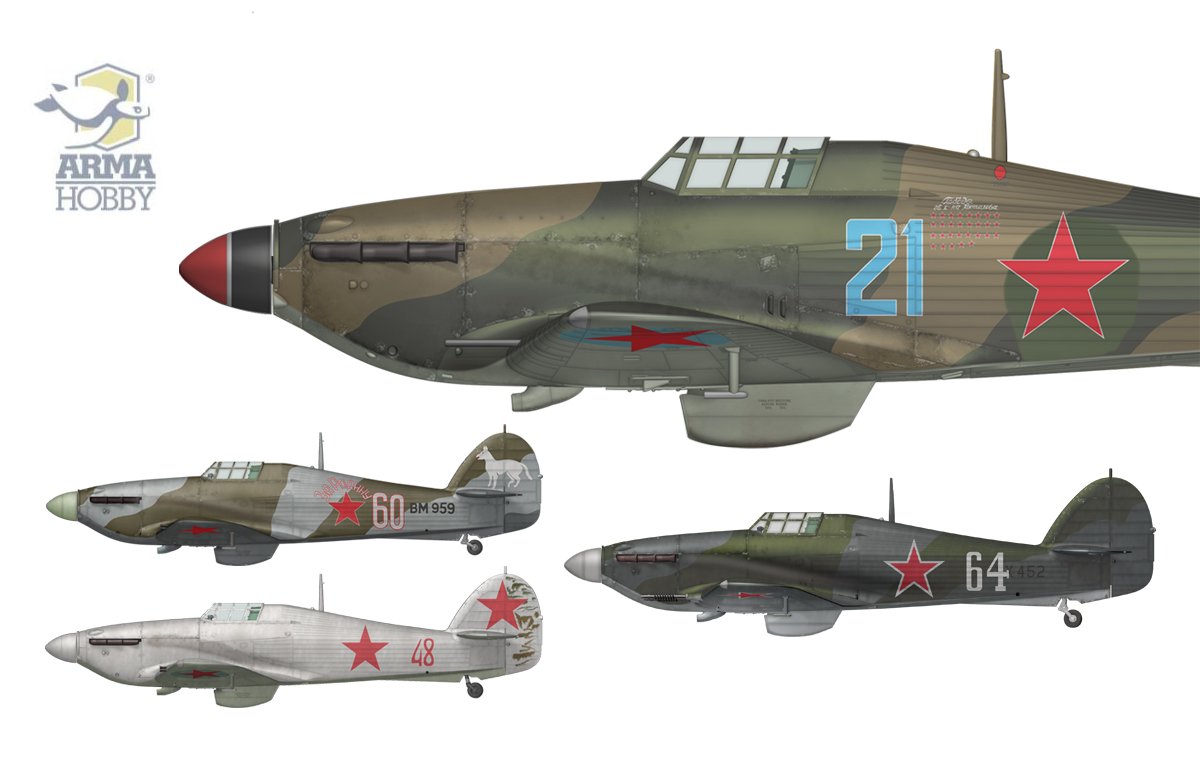
For me, the person primarily responsible for the project, the “Eastern Front” kit was a great challenge, as the knowledge useful for developing Hurricane RAF paint schemes proved essentially useless. The long road to solving the riddle of Hurricane Z2585/42, which required delving into the mysteries of the experimental paint schemes from spring 1941, has already been the subject of two of my articles, but the problems were equally complicated in the case of the others – mainly because of the scarcity of photographic material.
Hurricane Mk IIa/b/c Eastern Front 1/72 Deluxe Set – instrukcja modelu 70045
Hereunder I will briefly present my comments concerning the other paint schemes included in the kit.
Hurricane Mk IIc, KX452 “White 64”. Northern Fleet Air Force, 78th Fighter Aviation Regiment, USSR, March 1943

An extreme example not so much of the difficulty, but of the impossibility which we encountered while selecting and elaborating the paint schemes for the kit is Mk IIc KX452/64. The only thing known for sure is that this aircraft was sent to Murmansk in February 1942. What is uncertain is in which unit it served, while nothing at all is known about the course of its period of service. I must admit that our proposal for the markings of this sole Mk IIc in the kit is not based on any photograph, but only on a colour silhouette from Yuri Rybin’s “Soviet Hurricane Aces of World War 2”, published by Osprey. Never before when deciding upon an aircraft for which to develop decals have I been forced to capitulate and rely entirely on another author’s study, incidentally one of questionable quality and in all probability no more than a fantasy. KX452/64 may have looked completely different, but despite thousands of aircraft of this version serving in Soviet aviation, no photograph has so far surfaced that could provide a reliable basis for elaborating a paint and decal pattern of a Soviet Hurricane Mk IIc from a combat unit. The photographs acquired through contacts with Russian and Ukrainian researchers of the subject were also useless for our purposes. And if one managed to obtain such a photograph, the key fragment, that is, the location of the serial and tactical numbers, would not be visible. The failure of the search forced us to make a decision contrary to our principles, whereby we only present properly documented paint schemes and markings that are consistent with historical sources.
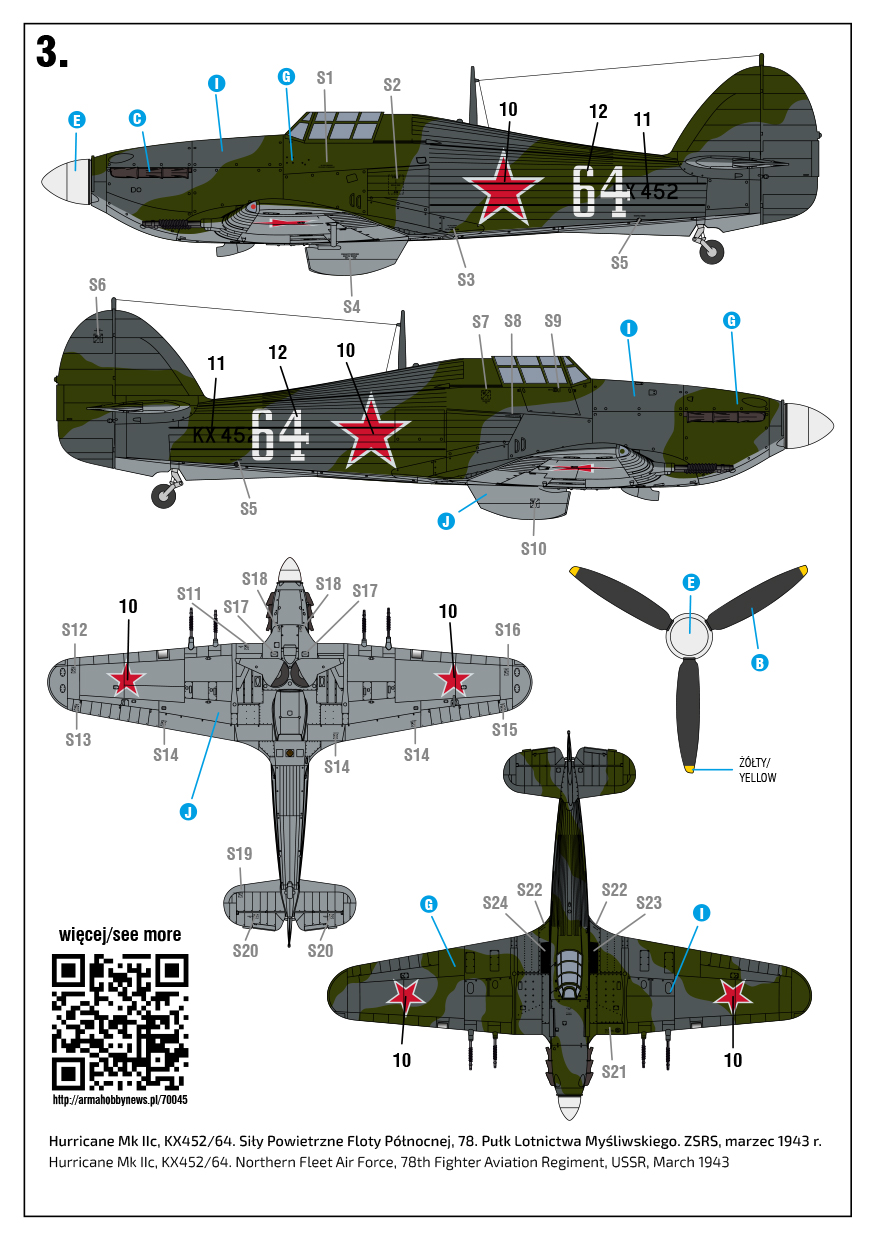
If anyone has in their possession a photograph of a Soviet Mk IIc from a front-line unit that could be used as a basis for reconstructing the paint scheme and markings, I would request that you contact me (eg. in comment under this article).
Hurricane Mk IIb, BM959 “White 60”. Karelian Front Air Force, 609th Fighter Aviation Regiment, USSR, April 1942

BM959 was received by the VVS factory-new. On 16 December 1941, after being packed into crates at 52MU, it set off aboard “Empire Halley” for Murmansk, arriving on 11 January 1942.
The aircraft was shot down on 6 April 1942 during an attack on a Finnish airfield near Lake Tiiksjärvi. The Soviet Air Force lost six of the ten Hurricanes involved in the battle. At the time, BM959 was piloted by Junior Lieutenant Nikolai Andreyevich Biletskyy (Белецкий Николай Андреевич), who after his forced landing became a Finnish prisoner of war. It was only thanks to this incident and the accurate photographing of the downed fighter by the Finns that we were able to reconstruct its appearance with some precision. The production date of BM959 suggests that it left the factory in the then current Day Fighter Scheme. However, at the time it was shot down it carried a winter paint scheme, with a light grey colour used by the VVS replacing the original Ocean Grey. The pictures show fragments of the front and the bottom of the rudder with the primary darker colour.
BM959 from 609 IAP photographed by the Finns after a forced landing on 6 April 1942. The extent of the damage inflicted by Finnish anti-aircraft artillery prevented recovery and the aircraft became only a source of parts for Z2585/HC-465. Photos via Carl-Fredrik Geust
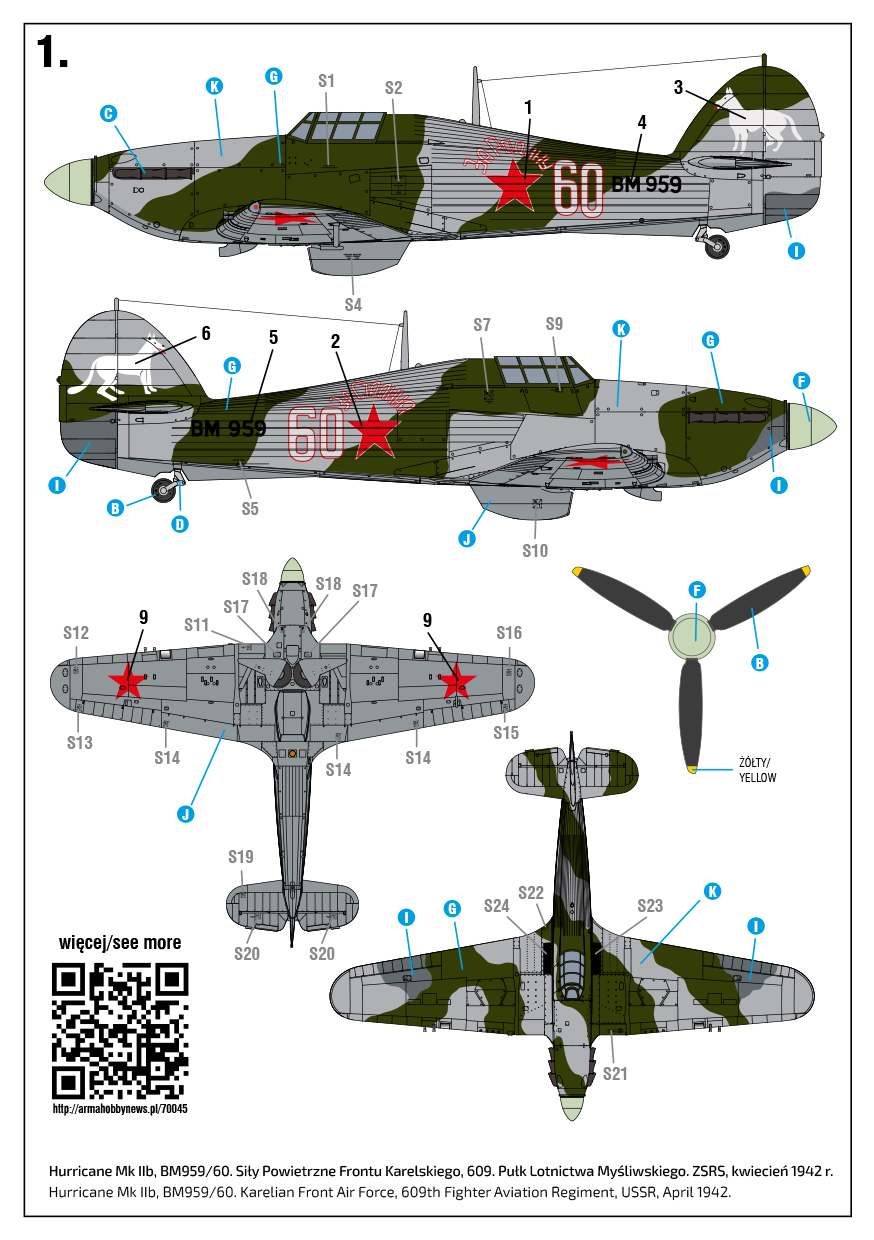
Unfortunately, there are no photographs of the upper surfaces of the wings and we cannot fully confirm that they were adorned with red stars, however this is very likely. Such uncertainty always accompanies attempts at reconstruction, and sometimes the decision to select a given solution is by and large accidental, as opinions within the team are divided. In my opinion, however, the addition of stars atop the plane will not be a mistake. The argument for this placement of the stars is that the aircraft was built in a series intended for direct shipment to the USSR, and received red stars already in England; in such cases, Hurricanes had stars on the fuselage and both wing surfaces. Aircraft repainted in the USSR usually received stars at six points, too, but in accordance with VVS rules, that is, on the lower wing surfaces of the wings, on the fuselage, and on the vertical tail unit.
Hurricane Mk IIb, Z5548/48. Soviet Air Force. Probably 26th Fighter Aviation Regiment. USSR, Winter 1941/1942
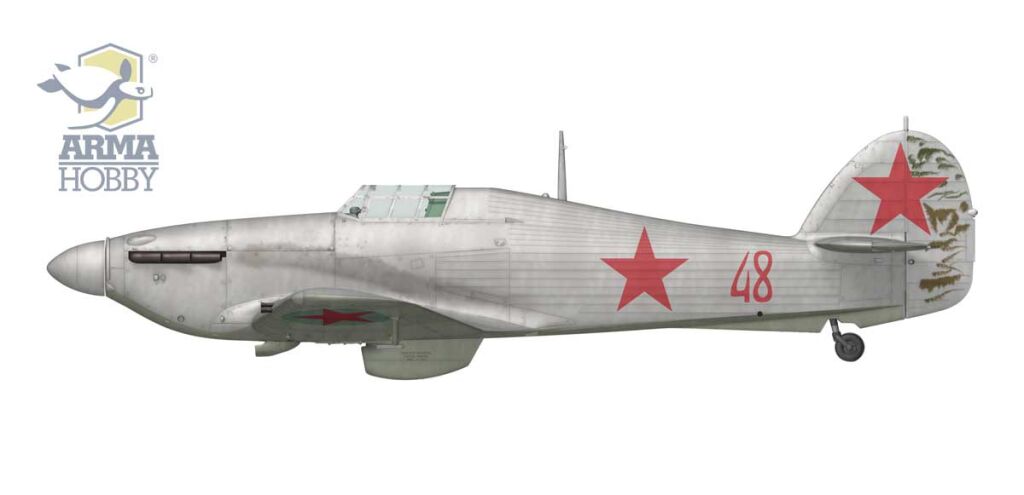
An aircraft in uniform winter camouflage, a photograph of which has been taken from Mirosław Wawrzyński’s book titled “Hurricane w obcej służbie”. To give but one example of the difficulties experienced with Soviet Hurricanes: in the caption to the photograph, the author stated that the aircraft flew with the 26th Fighter Aviation Regiment in the winter of 1941/42, while the description to the colour plate showing the same aircraft – in the very same book – informs that it was a reconnaissance aeroplane of the 13th Independent Reconnaissance Squadron in the winter of 1942/43. The only problem is that, according to Russian sources, neither unit flew the Hurricane at the time indicated in the captions – all this leaving aside the uncertainty of whether the second of these units even existed.
What is certain is the serial number Z5548, and that the aircraft arrived in Arkhangelsk on 11 October 1941 aboard the transport ship “Lorca”, as part of convoy PQ 1.

It also undoubtedly left England carrying the Temperate Land Scheme, and this explains the choice of colour on the underside of the wings and the factory colours showing through in places from under the white paint.
I settled the question of the stars atop the wing employing my private “six star rule”: If they are on the fuselage and the tail, they are not present atop the wing.
Hurricane Mk IIb “Blue 21”. Baltic Fleet Air Force, 3rd Guards Fighter Aviation Regiment. Sinyavino, USSR, Autumn 1942
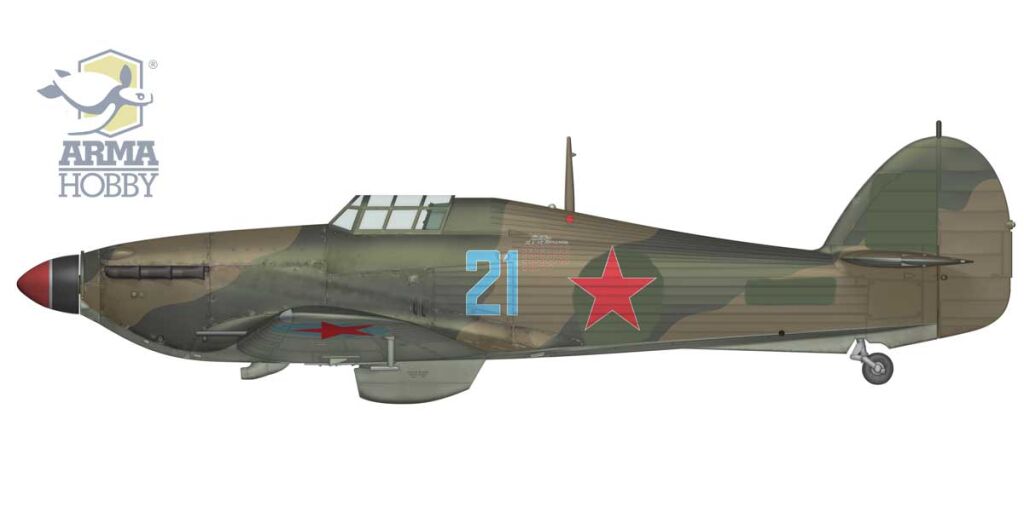
The aircraft was armed with two 20 mm ShVAK cannons and two 12.7 mm UBT heavy machine guns; standard equipment for the Soviet Mk IIb from the second half of 1942.
Between April and November 1942, the aeroplane was operated by Captain Georgiy Dymytrovych Kostyliev (Георгий Дмитриевич Костылев). The unit was deployed to the Karelian Front in August, and purportedly destroyed sixty-eight enemy aircraft during its two-month combat tour, losing fourteen Hurricanes. Of this number of victories, Kostyliev was credited with five individual and six group kills.
Photo: Public Domain, https://ava.org.ru/iap/3gm.htm
The reconstruction of the aeroplane’s appearance is based on the only photograph of a fragment of the fuselage with visible lettering and victory markings, and on several photographs of other aircraft from the unit. The likelihood that the aircraft looked exactly like the one in our reconstruction is slim. It most likely had a serial number in front of the tail unit, which no one painted over as we propose, however no one photographed it either – and we had no way of reproducing it. There is no photograph with a view of the vertical tail unit, and we can assume that there was a star there. According to Russian sources, Kostyliev’s fighter was supposed to have the inscription “For Ruthenia!” painted on it, but there is no photographic evidence of this either.

It is a pity that here, too, we could not offer a 100 per cent true-to-original paint scheme and markings. In the case of Soviet Hurricanes, however, this is unavoidable for the obvious reason that the aircraft, apart from their first period of service with the VVS, were not very popular and fought in units not often visited by propagandists; this is compounded by the fact that although they served with the VVS almost until the end of the war, there are astonishingly few photographs extant, and hardly any of good quality.
See also:
- Buy Hurricane Mk IIa/b/c Eastern Front Deluxe Set online at Armahobby.com!
Model maker for 45 years, now rather a theoretician, collector and conceptual modeller. Brought up on Matchbox kits and reading "303 Squadron" book. An admirer of the works of Roy Huxley and Sydney Camm.
This post is also available in:
 polski
polski


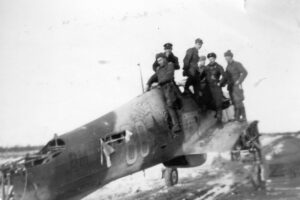


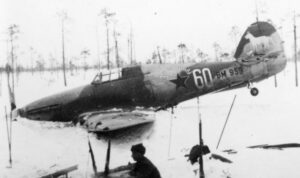




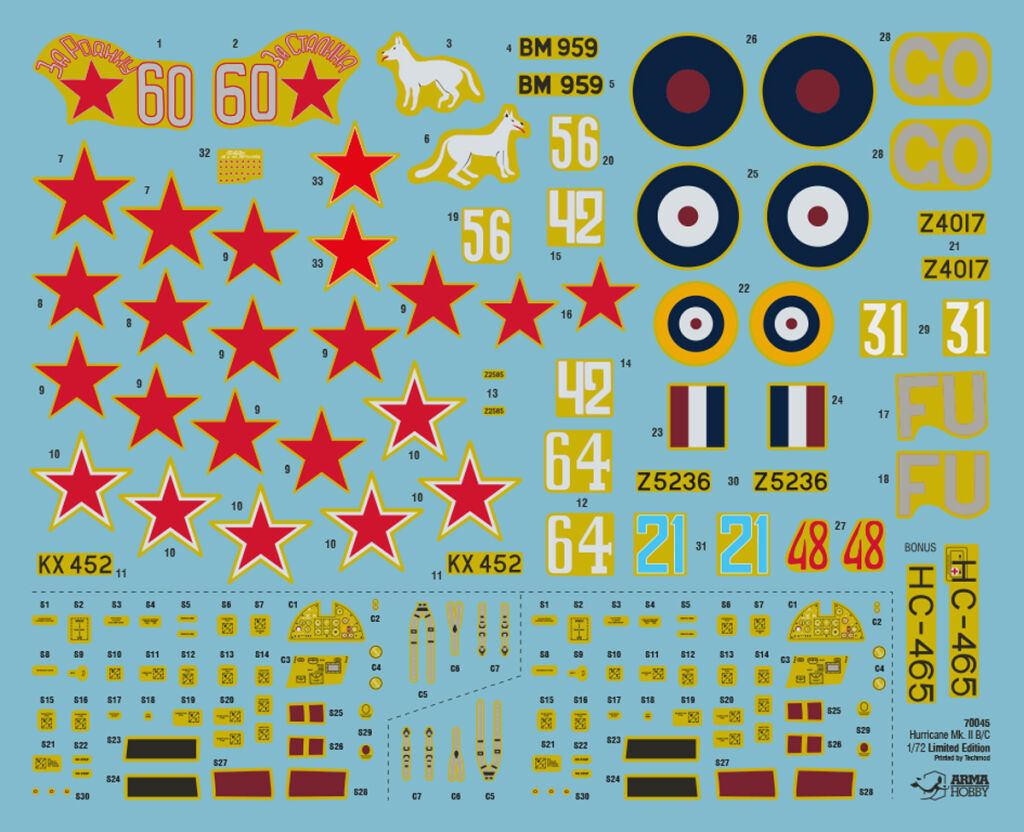

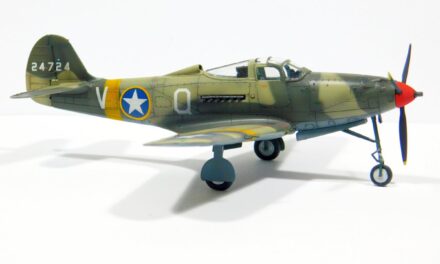


BM959 looks like Day Fighter Scheme, the grey maybe one of the mixes. Apart from very early deliveries, removal of RAF markings and addition of red stars by the British was standard, so the very common in profiles of the use of VVS paint does not have any basis. Misinformation by a well known ‘researcher’ has even had UK based Spitfire warbird with bright green patches under the red stars. Not to say the British applied paint always matched, I have seen a salvaged Airacobra with the underwing roundel painted out with black. The photo is on the Sovietwarplanes site. The photos of blue 21 are up on https://ava.org.ru/iap/3gm.htm, and I can’t make out repaint by fuselage star. And there are a surprising amount of photos of Hurricanes in VVS service, some clearly showing the markings in detail. Begemot have an extensive sheet, and I was discussing markings with them. For more do a google image search of ava.org.ru using adding in Харрикейн, which is Hurricane in Cyrillic. The authors of the Osprey Soviet Hurricane Aces book apparently were planning a book on Soviet Hurricane use but I have heard no more on this. A 3-d print of the Soviet… Read more »
I was also certain at one time that BM959 was painted according to the Day Fighter Scheme. However, there is a strong argument against it thanks to the photos from Carl-Fredrik Geust. Look at the photo and compare the shade under the tail, which was most likely Medium Sea Grey, and the lighter shade on the fuselage. Ocean Grey would be darker than MSG. Besides, a fragment of OG is visible on the front part of the fuselage and it can be compared. This aircraft served in the VVS for several winter months and in my opinion it received a light color on the top instead of OG, which better camouflaged it against the snowy landscape. It is clearly a lighter color than Medium Sea Grey, but not white. I think that Ocean Grey will never look lighter in a photo than Medium Sea Grey and that is why I assumed that the aircraft was repainted. This difference is also visible in other photos, but in this one it is most noticeable.